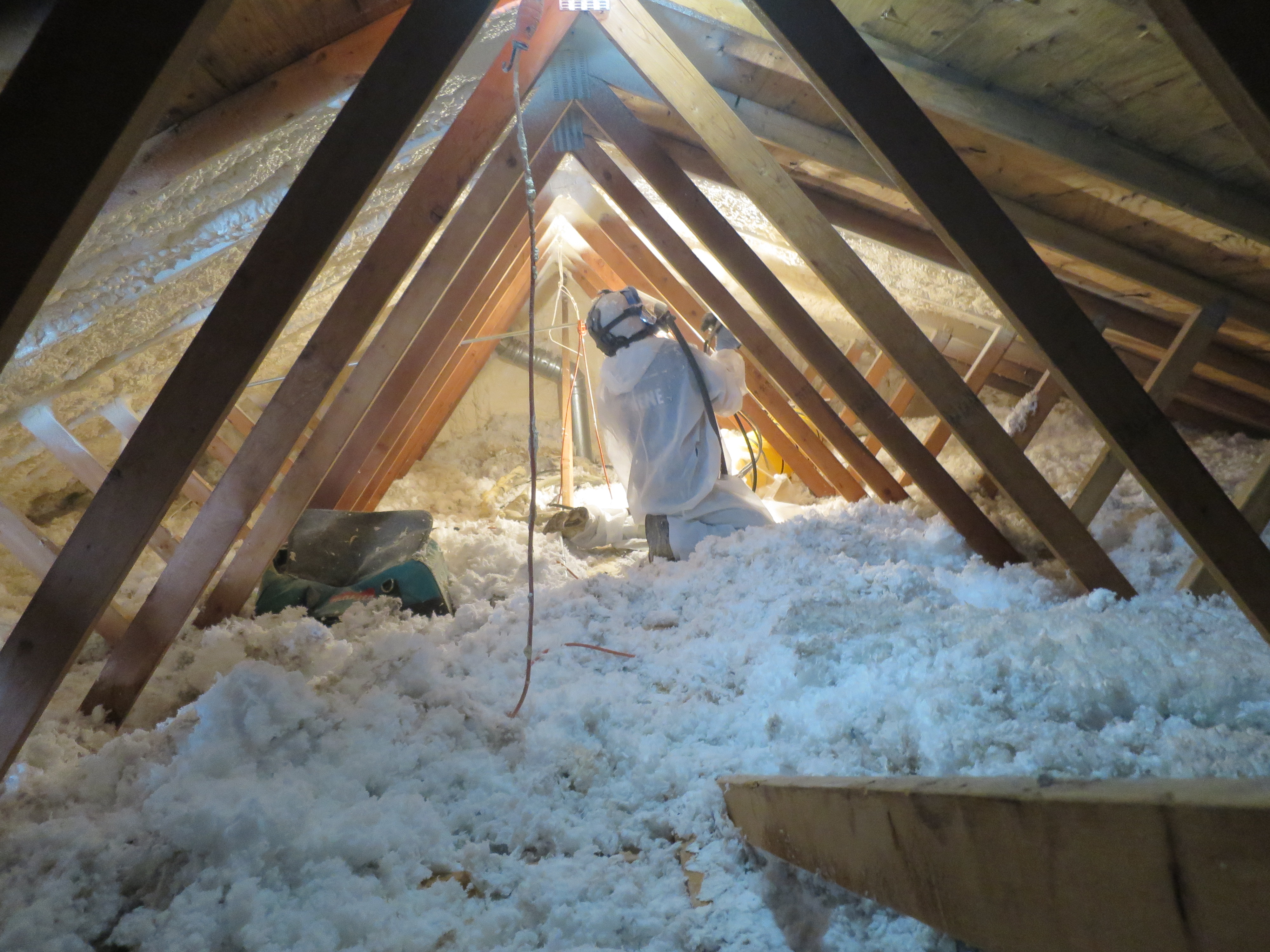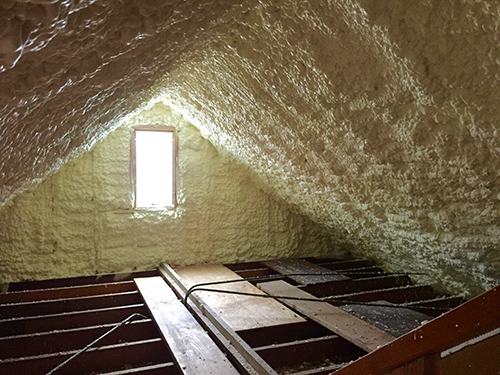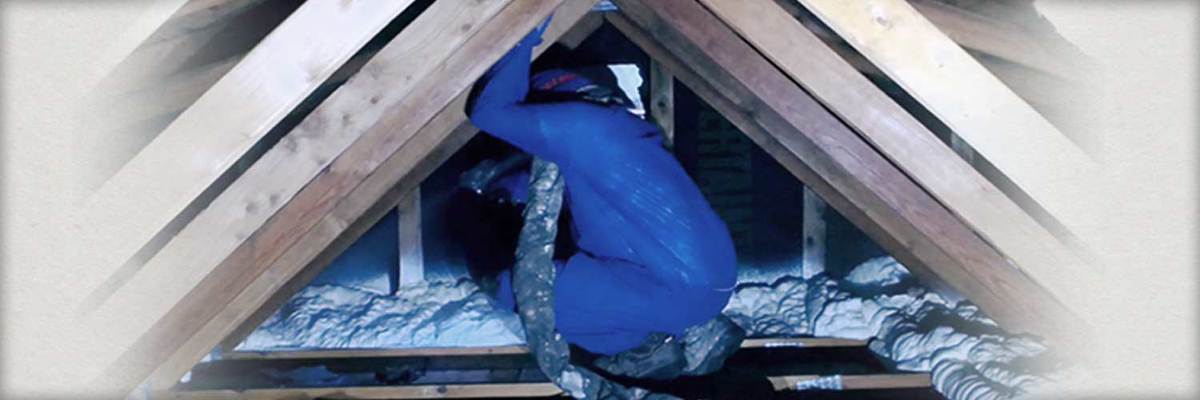Spray Foam Attic Floor Or Rafters

Attic insulation is a crucial element of a comfortable and energy-efficient home. Deciding between insulating the attic floor or the rafters with spray foam can be a significant decision, impacting your home's energy performance, comfort levels, and even air quality. This guide will provide a comprehensive overview of both methods, helping you determine the best option for your specific needs.
Understanding the Basics: Attic Insulation and Spray Foam
Before diving into the specifics, let's define some key terms. Attic insulation acts as a barrier, slowing down the transfer of heat between your living space and the unconditioned attic. This helps keep your home cooler in the summer and warmer in the winter, reducing your energy bills. Spray foam insulation is a type of insulation that is sprayed into place as a liquid and expands to fill gaps and crevices, creating an airtight seal.
There are two main types of spray foam: open-cell and closed-cell. Open-cell spray foam is less dense and has a lower R-value (resistance to heat flow) per inch. It's generally less expensive but also less effective at creating an air barrier. Closed-cell spray foam is denser, has a higher R-value, and is more effective at sealing air leaks and preventing moisture penetration. It's typically more expensive than open-cell foam.
Option 1: Insulating the Attic Floor
Insulating the attic floor is the traditional method of attic insulation. It involves applying insulation to the floor of the attic, effectively separating the living space below from the unconditioned attic above. This is a good option if you primarily use your attic for storage and want to maintain a more consistent temperature in the living areas.
Advantages of Insulating the Attic Floor with Spray Foam:
- Cost-Effective: Generally, insulating the attic floor is less expensive than insulating the rafters, particularly if you're using loose-fill insulation. While spray foam is pricier upfront, the long-term energy savings can offset the initial cost.
- Simpler Installation: The installation process is typically less complex compared to insulating the rafters, especially if the attic floor is easily accessible and relatively clear of obstructions.
- Effective for General Insulation: It provides a good level of insulation for keeping the living spaces below comfortable.
Disadvantages of Insulating the Attic Floor with Spray Foam:
- Leaves the Attic Unconditioned: The attic remains exposed to extreme temperature fluctuations, which can affect the longevity of stored items and potentially contribute to issues like ice dams in colder climates.
- Potential for Air Leaks: Sealing the attic floor completely can be challenging, especially around pipes, wiring, and other penetrations. If not sealed properly, air leaks can still occur, reducing the effectiveness of the insulation.
- Doesn't Protect Ductwork: If your HVAC ductwork is located in the attic, it will still be exposed to extreme temperatures, leading to energy loss and reduced efficiency.
Option 2: Insulating the Attic Rafters
Insulating the attic rafters involves applying insulation directly to the underside of the roof, creating a conditioned space within the attic. This approach brings the attic inside the thermal envelope of your home, making it a more comfortable and usable space.
Advantages of Insulating the Attic Rafters with Spray Foam:
- Creates a Conditioned Attic Space: This allows you to use the attic for storage without worrying about extreme temperatures. It also protects ductwork and other equipment located in the attic.
- Reduces Ice Dam Formation: By keeping the roof deck warmer, it helps prevent snow from melting and refreezing at the eaves, reducing the risk of ice dams.
- Improved Energy Efficiency: Conditioning the attic can significantly reduce energy loss and improve the overall energy efficiency of your home, especially if you have ductwork or HVAC equipment in the attic.
- Better Air Sealing: Spray foam, particularly closed-cell, provides an excellent air barrier when applied to the rafters, preventing drafts and air leaks.
Disadvantages of Insulating the Attic Rafters with Spray Foam:
- Higher Cost: Insulating the rafters is typically more expensive than insulating the attic floor due to the increased surface area and complexity of the installation.
- More Complex Installation: The installation process can be more challenging, especially if the attic has a complex roofline or limited access.
- Requires Proper Ventilation Considerations: When insulating the rafters, it's crucial to ensure proper ventilation to prevent moisture buildup and potential damage to the roof structure. This may involve adding vents or making other modifications to the attic.
Choosing the Right Option: Factors to Consider
The best option for your home depends on several factors, including:
- Your Budget: How much are you willing to spend on attic insulation? Attic floor insulation is generally more budget-friendly.
- Your Intended Use of the Attic: Do you plan to use the attic for storage or as a living space? If so, insulating the rafters may be the better option.
- Your Climate: In colder climates, insulating the rafters can help prevent ice dams. In hotter climates, it can help keep your home cooler.
- The Location of Your Ductwork: If your HVAC ductwork is located in the attic, insulating the rafters is highly recommended to protect it from extreme temperatures.
- Existing Ventilation: The existing attic ventilation will need to be evaluated, and possibly modified, when insulating the rafters.
- Local Building Codes: Ensure that your insulation project complies with all local building codes and regulations.
- Professional Consultation: Consulting with a qualified insulation contractor is highly recommended to assess your specific needs and determine the best option for your home.
Open-Cell vs. Closed-Cell Spray Foam: Which Type to Choose?
As mentioned earlier, there are two main types of spray foam: open-cell and closed-cell. Here's a more detailed comparison:
- R-Value: Closed-cell foam has a higher R-value per inch (typically around R-6 to R-7) compared to open-cell foam (typically around R-3.5 to R-4). This means closed-cell foam provides more insulation per inch of thickness.
- Air Barrier: Both types of spray foam provide an excellent air barrier, but closed-cell foam is generally considered to be more effective at sealing air leaks due to its higher density.
- Moisture Resistance: Closed-cell foam is more resistant to moisture absorption than open-cell foam. It can also act as a vapor retarder, preventing moisture from passing through the insulation.
- Cost: Closed-cell foam is typically more expensive than open-cell foam.
- Application: Closed-cell foam is generally more durable and can be applied in thinner layers compared to open-cell foam.
When to Use Open-Cell Spray Foam: Open-cell spray foam is a good option when budget is a primary concern and you're not as concerned about moisture resistance or maximizing R-value. It's often used for insulating attic floors or interior walls.
When to Use Closed-Cell Spray Foam: Closed-cell spray foam is the preferred choice when you need high R-value, excellent air sealing, and moisture resistance. It's ideal for insulating attic rafters, crawl spaces, and exterior walls.
DIY vs. Professional Installation
While DIY spray foam kits are available, it's generally recommended to hire a professional insulation contractor for spray foam installation. Here's why:
- Expertise and Experience: Professional contractors have the expertise and experience to properly install spray foam, ensuring that it's applied correctly and effectively.
- Safety: Spray foam installation involves working with chemicals that can be hazardous if not handled properly. Professional contractors have the necessary safety equipment and training to protect themselves and your home.
- Equipment and Tools: Professional contractors have the specialized equipment and tools needed to apply spray foam evenly and efficiently.
- Warranty: Professional contractors often offer warranties on their work, providing you with peace of mind.
Preparing Your Attic for Spray Foam Insulation
Whether you choose to insulate the attic floor or the rafters, it's important to prepare the attic properly before spray foam installation. This may involve:
- Removing Old Insulation: Existing insulation should be removed to ensure proper adhesion of the spray foam.
- Sealing Air Leaks: Any existing air leaks should be sealed before applying spray foam. This will improve the effectiveness of the insulation and prevent drafts.
- Repairing Roof Leaks: Any roof leaks should be repaired before installing spray foam to prevent moisture damage.
- Protecting Valuables: Cover or remove any valuable items stored in the attic to protect them from overspray.
- Ensuring Proper Ventilation: If insulating the rafters, ensure that there is adequate ventilation to prevent moisture buildup.
Summary: Making the Right Choice
Choosing between insulating the attic floor or the rafters with spray foam depends on your specific needs and priorities. If you're primarily concerned with cost and general insulation, insulating the attic floor may be sufficient. However, if you want to create a conditioned attic space, improve energy efficiency, and prevent ice dams, insulating the rafters is the better option.
Remember to consider factors such as your budget, intended use of the attic, climate, location of your ductwork, and local building codes. Consulting with a qualified insulation contractor is always recommended to ensure that you make the right choice for your home. Investigate reputable and certified insulation companies and get multiple quotes.
Finally, remember that proper insulation is an investment that can pay off in the long run by reducing your energy bills, improving your comfort, and increasing the value of your home. By carefully considering your options and making an informed decision, you can create a more energy-efficient and comfortable living environment.










